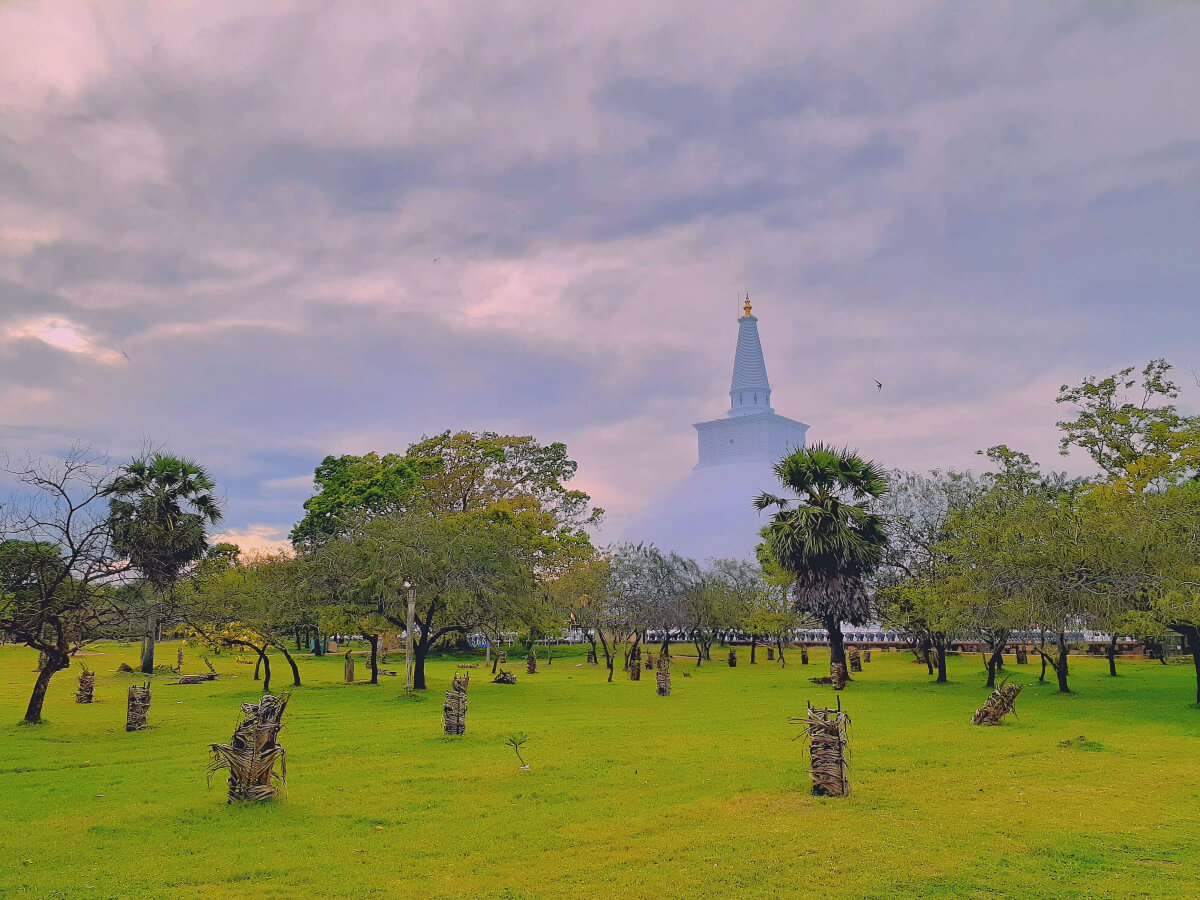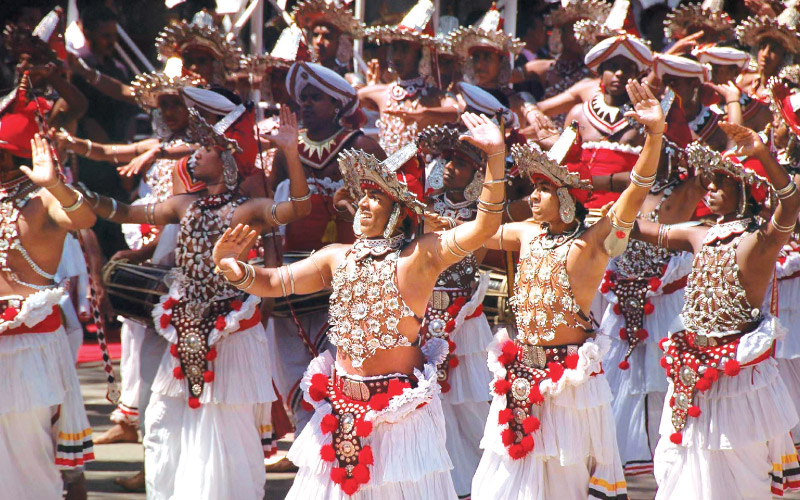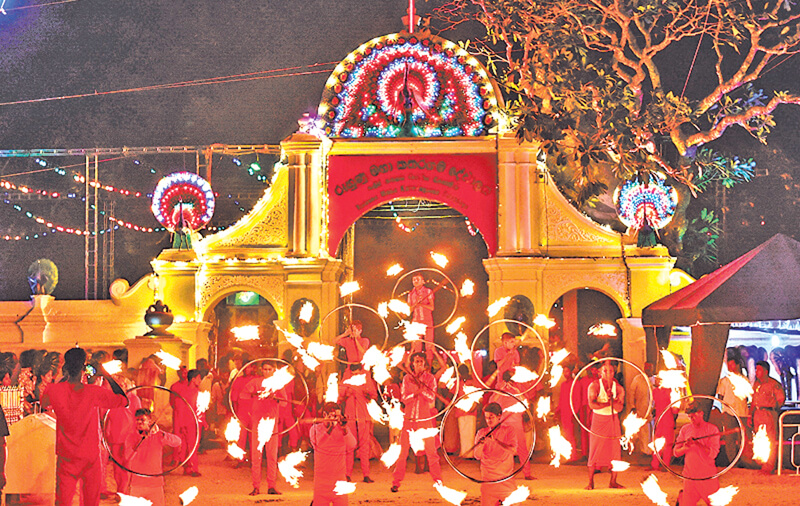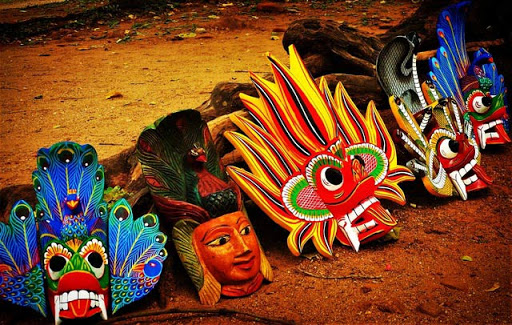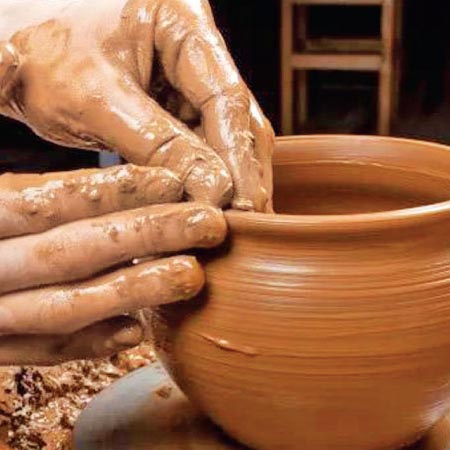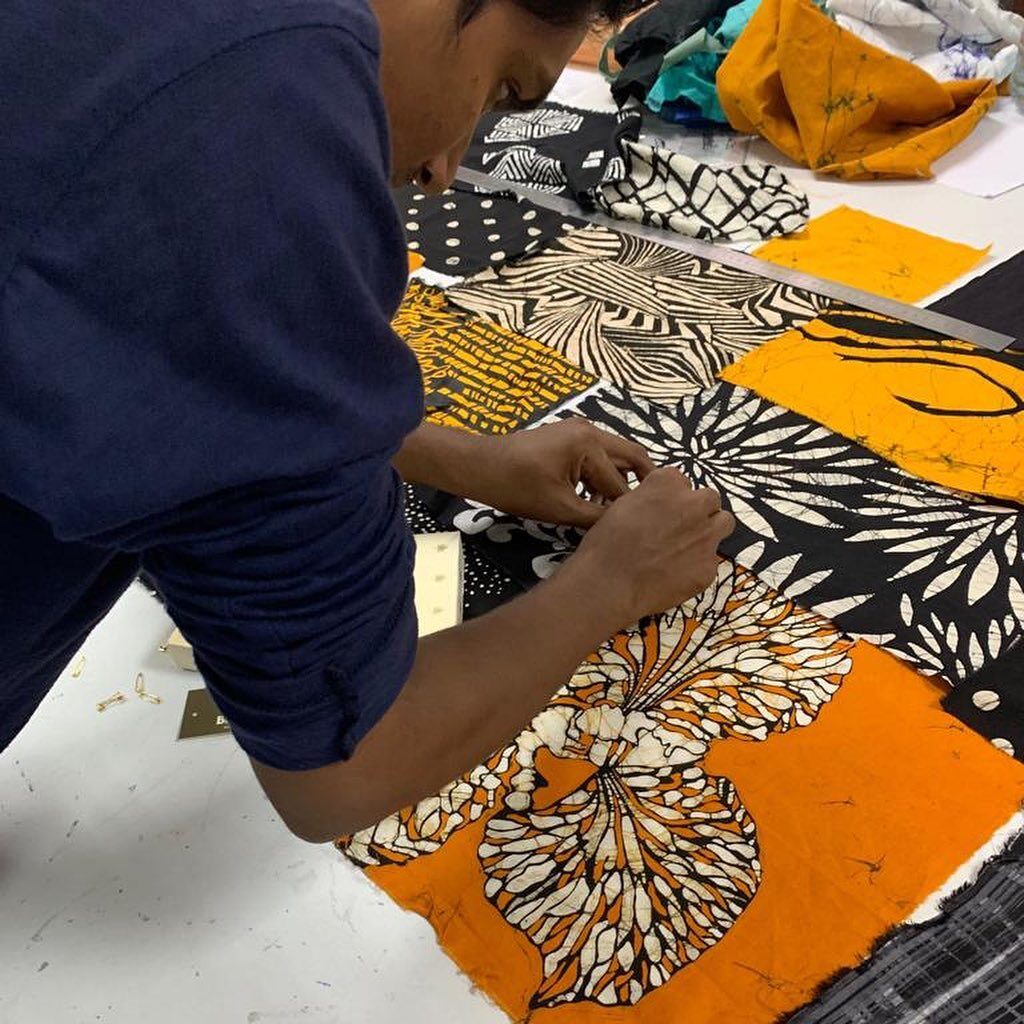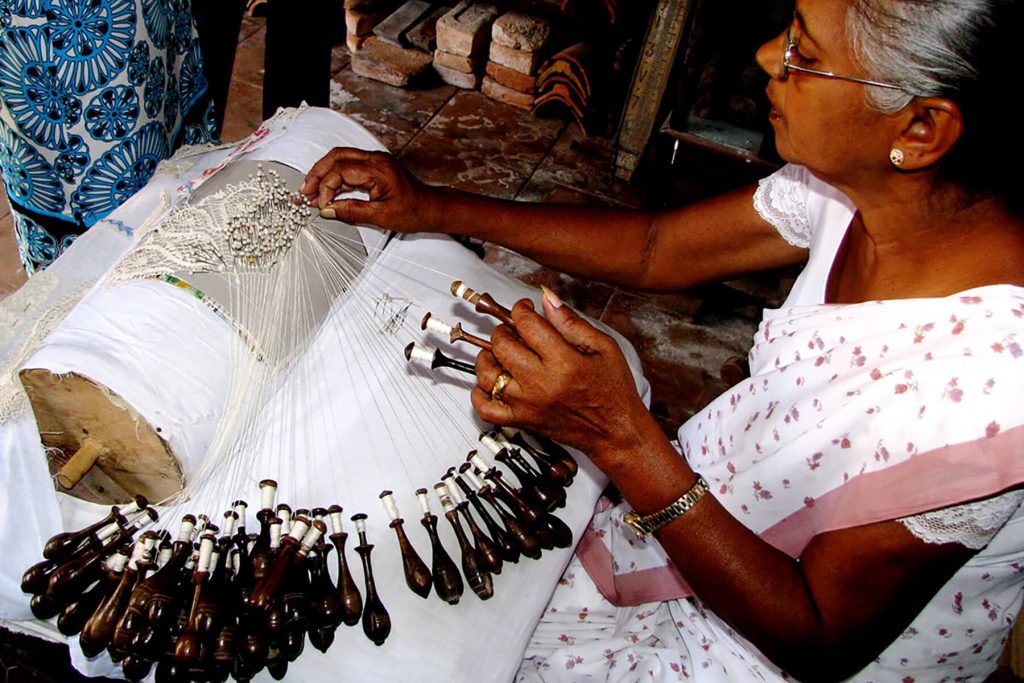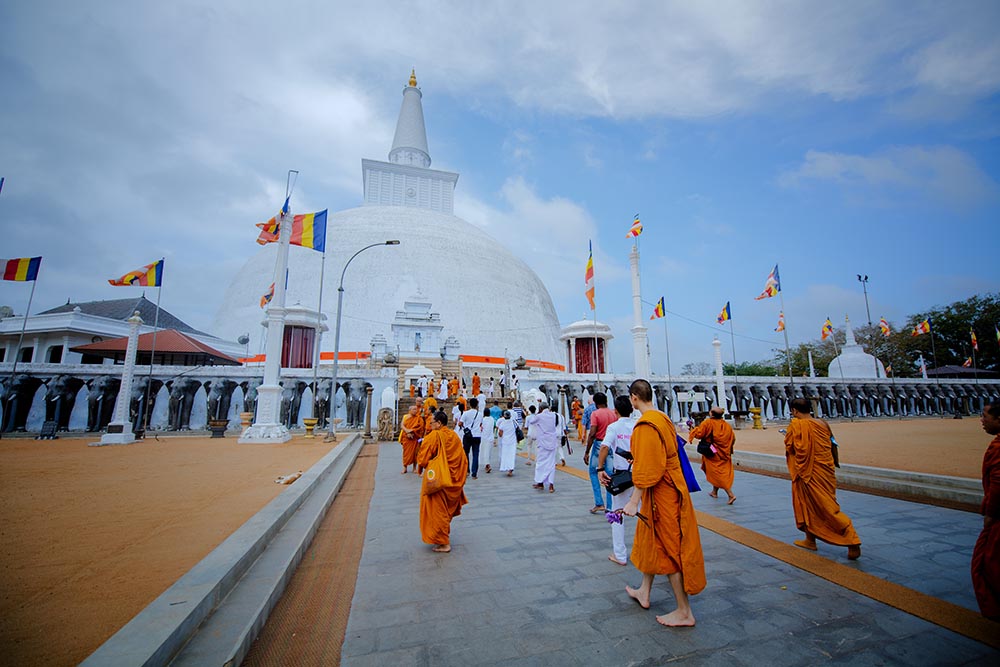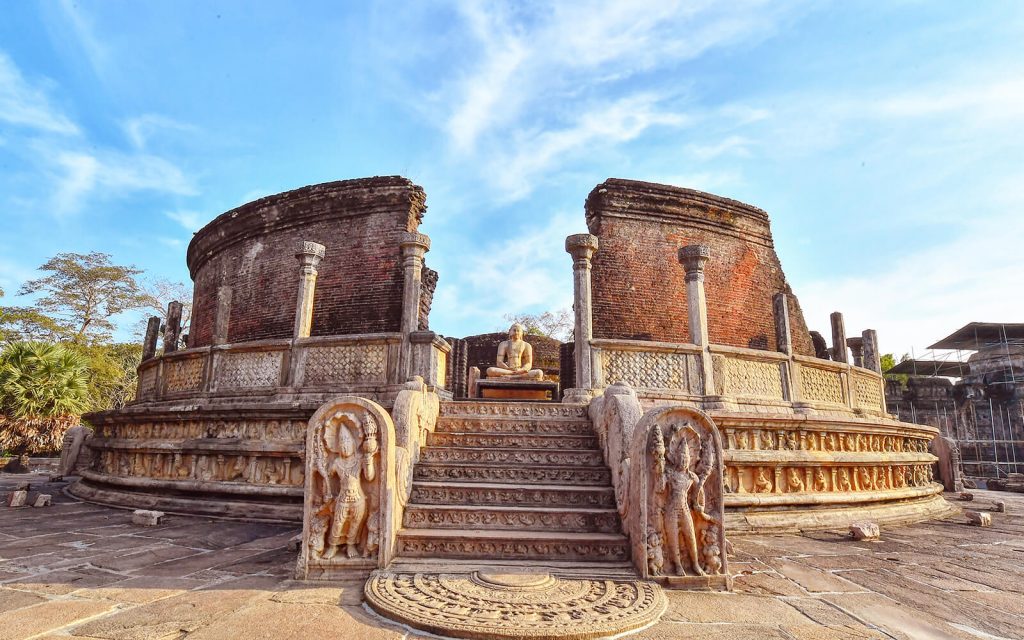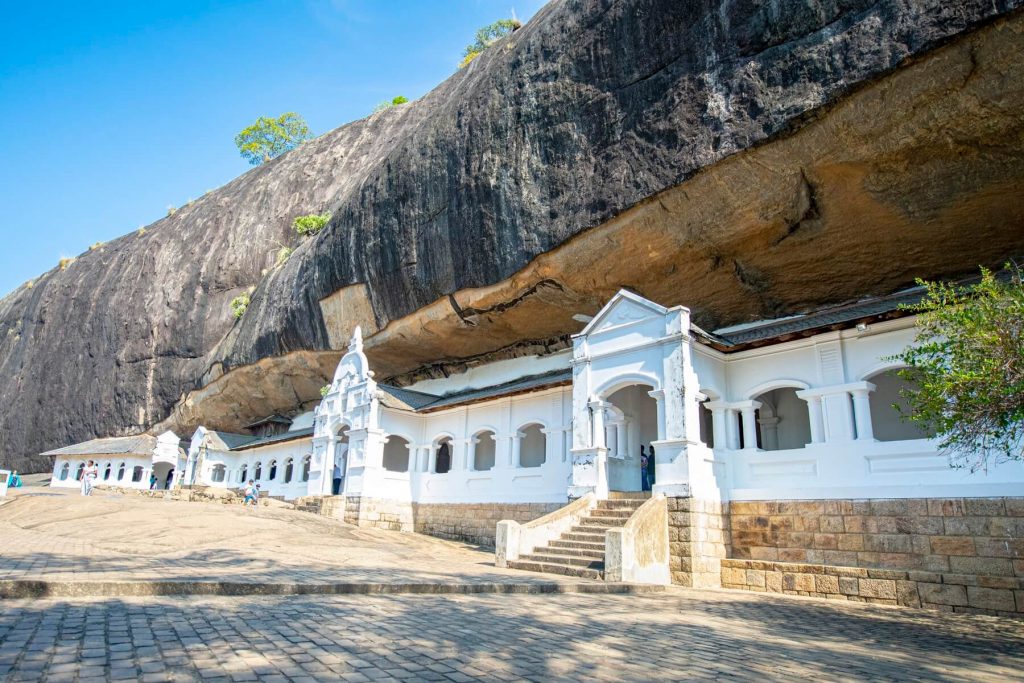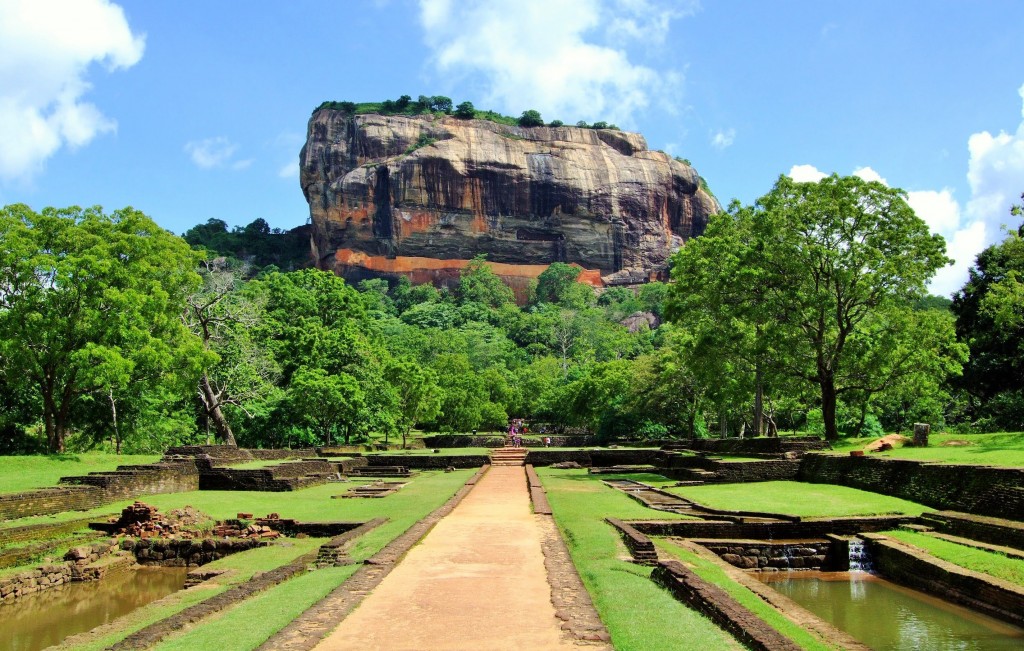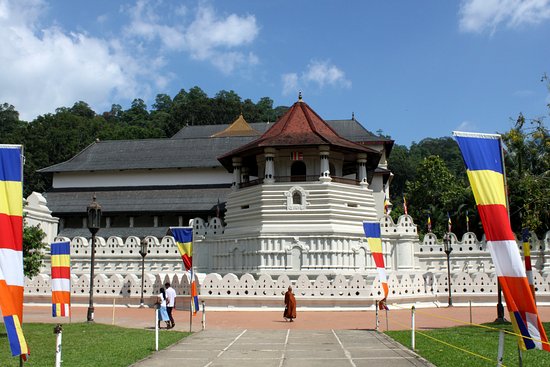Introduction
- Serendib
- Ceylon
- The Pearl of the Indian Ocean
These are the beautiful names given to Sri Lanka in the past by the British and the Arabs. Due to its vast history of rulers, varying degrees of colonial impact, modernizing influences, wealth, and income, Sri Lanka has developed a very diverse culture. Religion is an important aspect of life in Sri Lanka and is a dominating factor in this element of diversity. Over 75% of Sri Lankans are Buddhist Sinhalese, and the rest comprise of other ethnicities such as Tamils, Muslims, Christians, and Malays. Buddhist and Hindu Temples, Mosques, and Churches have their own colorful rituals, which comprise the most visible features of the cultural landscape in Sri Lanka.
In addition to historical and cultural diversity, the country is blessed with a wide landscape variety. From lush greenery to tropical beaches to mountainous terrains and extensive wildlife, a holiday in Sri Lanka would be the ultimate option to experience a little bit of everything!
Cultural Heritage
With some influences from neighboring India and ruling colonies such as the British, Dutch, and Arabs, Sri Lanka’s historical and cultural heritage is impressively distinctive in terms of preserved ruins, traditions, attire, food, arts and crafts, and so on.
Language
With Sinhalese being the most dominant language in Sri Lanka, we also have a lot of Tamil being spoken across the country. One can also get around with a few words of English, which is fluently spoken in urban cities such as Colombo and Kandy, but is becoming popular throughout the island.
Dance
- Kandyan dance in the hill country, also known as Uda Rata Natum. This performance is usually a narration of the Indian Ramayana, where costumed dancers impersonate different movements of animals.
- Devil dance or the low country dance in southern Sri Lanka known as Pahatha Rata Natum is performed to please the evil spirits. Wearing different masks, the dancers depict characters such as birds, demons and reptiles.
- Producing a combination of the Kandyan and low country dance is the Sabaragamuwa dance. Performed mainly in the Ratnapura district, the primary purpose of this dance is to worship the God of Saman.
- Classical folk dance is also performed in Sri Lanka which demonstrate characteristics of a certain region and period. Stick dance, pot dance, hand drum and polkatu dance are some prevailing classical folk styles today.
Where can you watch these dance forms live in Sri Lanka?
- King George Hall (KGH) of the University of Colombo
- Navarangahala of the Royal College, Colombo
- Elphinstone Theatre and the Nelum Pokuna Mahinda Rajapaksa Theatre
- The Lionel Wendt Art Centre
- The Nelung Arts Centre
Music
Music in Sri Lanka is uprooted from four main influencers.
- Ancient folk rituals
- Buddhist religious traditions
- Legacy of European colonization
- Influence of Indian culture, specifically Bollywood music
Baila, originating from the Portuguese and Africans, is a common form of music played at clubs, parties and fun events. Folk music is created with a few instruments and has a narrow frequency range. Folk songs and poems encourage working together when in a social gathering. Sri Lankan country music consists of the highly evolved pageantry tradition, puppetry, and Nurthi – a stage drama music. The Indian influenced classical music also has evolved into something unique. We also have the typically Sri Lankan style traditional drama, music and songs.
Clothing
In Sri Lanka, the traditional costume for men is the sarong while women are seen wearing sarees. Men of any age wear either a sarong or a trouser/jeans for almost all occasion. With women, sarees are seen at formal and informal events as well as office wear. This is mostly for adult women however, because little girls prefer the skirt and blouse attire as traditional.
Festivals and Tradition
In addition to showcasing the culture and religions of the country, Sri Lankan festivities display its intriguing history and beautiful traditions.
- Sinhala and Tamil New Year: The only festival in Sri Lanka where the entire nation is on holiday for about a week. At the beginning of the Lunar year in April, Sri Lankans decorate their houses, make traditional sweets, wear their best outfits and partake in traditional activities such as blessing their children, lighting fireworks, and preparing the first homecooked meal for the year.
- Vesak Poya: This Buddhist festival is celebrated on the full moon day of the month of May. Also known as the festival of lights, this week-long festival commemorates the birth, enlightenment, and passing of Lord Buddha. The entire island is a kaleidoscope of colorful lanterns and lights – a sight worth seeing!
- Poson Poya: Celebrated on the full moon day of June, this annual Buddhist festival celebrates the arrival of Buddhism to Sri Lanka in the 3rd Century BC.
- Kandy Esala Perahera: One of the oldest and most extravagant Buddhist celebrations in Sri Lanka, the Esala Perahera takes place in July or August and pays homage to the sacred Tooth Relic of Lord Buddha. Celebrations include processions every day with lavishly dressed dancers and talented drummers, fire jugglers, musicians, stilt walkers, and costumed elephants.
- Maha Shivarathri: A Hindu festival celebrating the marriage of Shiva to Parvati. All night long prayers take place in addition to home parties and temple gatherings. While meditation rituals are one form of celebration, some temples celebrate with music and dance performances, creating a vibrant atmosphere.
- Vel Festival: The most important Hindu festival dedicated to the war God Skandha. Processions and festivals take place to commemorate the victory over evil forces and worships the trident, also known as the Vel.
- Nallur Festival: A 25-day long festival taking place in July/August, held at the Kandaswamy Temple in Jaffna where several thousands of followers gather; men dressed in white and women in their best sarees.
- Kataragama Festival: Also in July/August, the holy town of Kataragama in south Sri Lanka attracts thousands of pilgrims of all faiths to fulfil their vows and seek guidance from Lord Kataragama.
- Pada Yatra Pilgrimage: From June to July, thousands of pilgrims walk from Jaffna in the north to Kataragama in the south as a challenge. This incredible spiritual journey follows diverse landscapes such as the beautiful eastern coast of Sri Lanka and the Yala National Park.
- Thai Pongal: One of the most cherished Tamil holidays falls in mid-January and focuses on honoring the Sun-God Surya as well as cattle God, because both play an important role in feathering a good harvest.
Arts and Crafts
A complete range of arts and crafts are available in many stores that can be seen as you travel across the country. In Colombo, Laksala and Lakpura are two popular stores that offer unique arts and crafts that can be taken home as souvenirs of Sri Lanka.
- Masks: used in healing rites and rituals and are deeply connected to Sri Lankan folk-lore. Devil dances are where these masks have gained most popularity.
- Handloom: handwoven fabrics in vibrant colours and patterns are now a favourite among shoppers. Handloom household decorative items, curtain, cushion covers, hand bags, bedsheets, sarees, garments, book covers and much more are available!
- Beeralu Lace: this lacemaking tradition has been caught on from the Dutch and Portuguese women and is now practiced by women in houses in the south of Sri Lanka. It is quite fascinating to see how the hands create intricate patterns in the art of lacemaking.
- Drums (Bera): a special craftsmanship is required for making drums from a Jack Tree and animal hide.
- Jewellery making: has reached international standards with traditional and modern designs sought worldwide.
- Lacquer Work (Laksha): colourful and bright ornaments finished with a wax coat derived from insects, makes it an ideal token to depict Sri Lankan culture.
- Clay (Pottery): one of the oldest line of craftwork in Sri Lanka, still a widely popular activity for tourists to try their hand at.
- Wood Carving: this tradition is centuries old and is possible on furniture, household items, jewellery, boxes, ornaments, toys, sculptures, lacquer work and so on.
- Batik: influenced by Indonesian culture, batik is the creation of textile with intriguing designs and colour combinations, out of which garments are made.
Places of Historic and Cultural Significance in Sri Lanka
The Cultural Triangle
Located in the centre of the island, Sri Lanka’s cultural triangle stretches between Anuradhapura, Polonnaruwa and Dambulla, covering everything in between these three ancient cities. Whether your Sri Lanka holiday itinerary covers the east coast, the central highlands or southern Sri Lanka, the cultural triangle can easily fit into any of these.
This area offers a wealth of historical and cultural sites, including UNESCO World Heritage Sites as well as Buddhist Temples, ancient monasteries, sculptures, and stupas, some of which date back to over 2000 years. Discussed below are the UNESCO recognized cultural sites that are part of the cultural triangle in Sri Lanka.
UNESCO World Heritage Sites
Anuradhapura City
The largest of the ancient cities of Sri Lanka, Anuradhapura has an area of about 16 square miles with sprawling ruins, temple remnants stone Stupas and Buddhist monasteries. The most popular of these are the Ruwanweliseya Dagoba built in 140BC and the huge holy fig tree believed to be where Lord Buddha was enlightened.
Polonnaruwa City
Polonnaruwa was the second capital of Sri Lanka, after Anuradhapura. Bhramanic constructions and a garden city from the chola civilization of the 12th century are some of the remains that can be found here. Tombs, Temples and other ruins are included in the archaeological attractions of Polonnaruwa.
Dambulla Cave Temples
A recent addition to the UNESCO World Heritage Sites (1991), this well-preserved cave temple complex is built on a 600-foot-high rock. Magnificent wall paintings and over 150 statues of Lord Buddha have been the point of attraction for pilgrims for over 22 centuries.
Lion’s Rock – Sigiriya
Want to explore a palace built on a flat rock in the 5th century? This is Sigiriya; probably the most famous heritage site in Sri Lanka. The climb to the top is about 1200 steps, but along the way, you can take breaks to indulge in the gorgeous view and also to explore the beautiful frescoes protected in an indentation within the rock. At the summit, you will see remnants of the King’s fortress, a vast water pool and of course, a stunning 360-degree view of the cultural triangle.
Kandy City
From 1592 to 1815, Kandy was home to many Sinhalese Kings, making it the cultural hub in Sri Lanka. It is also where the sacred Tooth Relic of Lord Buddha is housed – at Sri Dalada Maligawa. Also known as the Temple of the Tooth, this is a site that attracts Buddhist pilgrims from all over the world.
Galle Fort
The Portuguese built a Fort in Galle in 1505, but it took off after the Dutch expanded it in 1663. Around the Galle Fort, you can see Dutch Churches, Old Dutch houses, and a Dutch Hospital. The thriving community around the fort makes it a vibrant place, with boutique shops, galleries, cafes, restaurants, and much more.
Conclusion
You have now learned all about Sri Lanka’s historical and cultural heritage and the diversity in one small island nation must have surely stirred your mind. So, if you want a holiday full of fun, adventure, excitement as well as an insight to history and culture, Sri Lanka is the place to be! Get in touch with us to plan your customized vacation package with an itinerary that includes all the places you prefer to visit!

